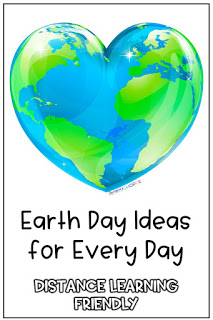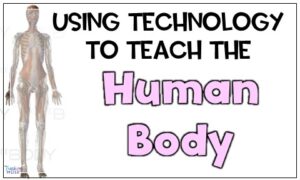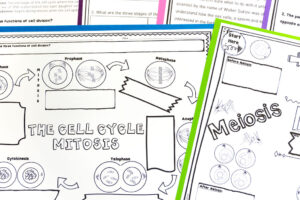Earth Day was first recognized in 1970 after Senator Nelson pushed for the world to take care of the earth. Since then, every April 22, global initiatives are coordinated on this day to find ways to drive transformative change for the planet and the people living on it.
As a science teacher, it is of high importance to recognize Earth Day in the classroom; however, don’t wait until April 22 to teach about our planet’s environmental problems. The following ideas and videos are great for Earth Day, but they can be used at any time of year. Days before school breaks, as sub plans or days when you have a modified schedule are perfect times to squeeze in reminders of why it is important to take care of our planet.
Earth Day Activities
Here are some activities and ideas that I use with my students on Earth Day or any time of the year.
Lesson on the Environment
Midway, Island:
Midway Island is found northwest of Hawaii. It’s well known for its location during WWII when the United States was able to use the island to help ward off Japan. Midway Island is known for the number of plastics washing up on its island and killing animal life. Albatross have their second-largest colony on this island; however, if you look along the beaches and nesting areas of the birds, you will find them littered with plastic and dead carcasses. As they decompose, you can see that their bellies are filled with plastic.
This video is about 8 minutes in length and is a good launching pad for classroom discussion. Students will see that many plastic products, such as toothbrushes, washing ashore are things they use every day. The amount of plastic on the beach is astounding. After showing the video and unpacking the different talking points to the class, launch into a conversation about how we can solve it. Brainstorm together, and then have students work in groups to explore solutions to our plastic problem further.
Lesson on Endangered Animals
Pangolins:
Pangolins are cute, scaly mammals. They are the only mammal that is covered in over one thousand scales. The scales are used to protect themselves. However, their scales also make them the number one most trafficked mammal, with all 8 species currently on the endangered species list. In the past decade, over one million of them have been poached. Their scales are said to cure everything from arthritis to epilepsy to stomach disorders. But there is no science to prove that this is true. Other factors that are contributing to its endangered status are habitat loss and a slow reproduction rate.
Connect the video to ecosystems after showing students the video on pangolins and having a class discussion. Since many students haven’t heard of pangolins, they may not understand their importance in our ecosystem. In light of the recent CoronaVirus pandemic, this species is under attack even more, as some people believe the pangolin may have caused the spread of the virus. Students research what pangolins eat and where they live. They will create a food web and then remove the pangolin to allow others to see the importance of this mammal in our world.
Connect the video to ecosystems after showing students the video on pangolins and having a class discussion. Since many students haven’t heard of pangolins, they may not understand their importance in our ecosystem. In light of the recent CoronaVirus pandemic, this species is under attack even more, as some people believe the pangolin may have caused the spread of the virus. Students research what pangolins eat and where they live. They will create a food web and then remove the pangolin to allow others to see the importance of this mammal in our world.
Ocean Pollution Lesson
Coral Bleaching:
The Great Barrier Reef is a well-known coral reef in Australia. It is actually 3,000 reefs that are spread across the coast of Australia, taking up about the size of Italy. Over the years, the beautiful reefs in Australia (and other places) have started to bleach from pollution, global warming, and overfishing. This means they are losing their colors which puts them at great risk of dying. Scientists first noticed it during the summer of 2014, and since then, it has spread to coral reefs all over the world.
Throughout the 8-minute video, students will learn about coral reefs, what coral is and how it is made up, and factors that are contributing to its loss. Students will also be introduced to climate change and how it is affecting the reefs.
After watching this video, group students and give each group discussion cards with questions on them. Students will discuss major topics in the video. Depending on how much time is allotted, have the students work together to research methods done by individual communities to minimize the human impact on the environment, in this case, coral reefs. Students could then argue for or against whether they believe the methods are helping or hurting the environment.
After watching this video, group students and give each group discussion cards with questions on them. Students will discuss major topics in the video. Depending on how much time is allotted, have the students work together to research methods done by individual communities to minimize the human impact on the environment, in this case, coral reefs. Students could then argue for or against whether they believe the methods are helping or hurting the environment.
Lesson on Air Pollution
Air Pollution:
Air pollution is something that is not talked about enough. A tiny percentage of air pollution is natural. Students may identify volcanic eruptions, dust storms, or wildfires as a form of natural pollution, yet, much of the pollution is on us. Toxic smoke from factories, smoking, and car emissions are ways that we are causing air pollution in the environment.
In this 6-minute video, students will learn how burning fossil fuels contributes to global warming. This, in turn, causes a host of problems. Smog develops, which not only hurts the environment but also causes health problems. According to the World Health Organization, over 2 million people died throughout the world from air pollution. Students will also learn about ways to reduce air pollution.
An activity that can drive this point home is to first create a cause and effect chart with the students. Identify causes of air pollution and how this affects the world. Students can then research the health of their area compared to New Delhi, India. New Delhi is listed as an area in poor health because of air pollution in the area. Students can also compare the area’s conditions to their own and brainstorm possible ways to reduce air pollution in their community.
An activity that can drive this point home is to first create a cause and effect chart with the students. Identify causes of air pollution and how this affects the world. Students can then research the health of their area compared to New Delhi, India. New Delhi is listed as an area in poor health because of air pollution in the area. Students can also compare the area’s conditions to their own and brainstorm possible ways to reduce air pollution in their community.
Lesson on How Humans Impact the Environment
Students will learn how humans change their environment. The video takes students through a normal day and identifies how humans have changed the environment to make life easier, such as using natural resources like wood and water. They will learn that every living thing has an impact on the environment.
After watching this 5-minute video, have students create a list of ways humans positively and negatively change their environment. This list can lead to a class discussion as students defend why they think it is helping or hurting the environment. Students can also research to find out the amounts of water that is used in their area. According to the video, NYC uses 3 billion gallons of water each day. Students can compare this amount to their own area.
These activities are ones that you can easily implement into your classroom. If you want activities that are ready to go at your fingertips, click here to check out my Earth Day activities.
These activities are ones that you can easily implement into your classroom. If you want activities that are ready to go at your fingertips, click here to check out my Earth Day activities.







